Table of Contents
Between 2000 and 2020, internet access increased by more than 1200%. And research has shown that more than 70% of consumers use search engines to find new brands, products, or services.
That means if you’ve outgrown your local market, there’s a good chance you’ll find new customers by expanding your reach worldwide. One of the most sustainable and effective strategies for accomplishing this global SEO.
The major differences between global SEO, general SEO, and local SEO
General search engine optimization includes all of the techniques which make a website more appealing to search engines and searchers. These tactics are crucial for making an impact on search engine results pages (SERPs) include things like:
- Generating backlinks
- Writing meta descriptions and title tags
- Making a website mobile-friendly
- Creating and submitting an XML sitemap
- Developing relevant and interesting content
- Tracking relevant SEO metrics
No matter which content management system (CMS) you use or what industry you’re in, you will need general SEO.
Local SEO, on the other hand, increases organic search traffic for businesses like car washes, restaurants, gyms, and clothing stores that have physical locations. This strategy includes more niche tactics like updating Google My Business (GMB) listings, providing contact information, and optimizing for keywords in your local market.
Unlike local search tactics, the goal of global SEO is to reach new markets across the world. The foundation for international SEO is general optimization. Once you have the basics in place, local techniques tailored to different countries and regions can help your rankings.
Global SEO can also involve enterprise SEO techniques that are made to scale. Since a global company may have a presence across countless web pages and assets, SEO techniques for these businesses involve systematic SEO improvements that can be executed across thousands – even millions of pages.
Tips for global SEO expansion
Ecommerce brands that can handle increased sales or clients should definitely strive for globalization. Search engine results pages are supposed to be full of relevant content that helps users in a unique way.
With general techniques already on your website, it’s time to take it to the next level. Follow these global SEO tips if you’re ready for world domination online.
Segment your audiences
In the preliminary stages of global market domination, you will identify your target markets. They can initially be relatively vague areas like “eastern Asia.” Eventually, though, segmenting your markets is crucial for developing an impactful SEO strategy.
Google Analytics data can tell you where to concentrate your efforts. It allows you to break down your organic traffic by region, device, etc. so that you can understand the best method for optimization. Once you know your market segments, you can begin brainstorming how you will create valuable content for the people in those areas.
Determine your global website approach
You need to decide whether or not you want to make separate website versions for each specific country that you’re targeting. There are two common routes: individual country domains and targeted web pages.
One website approach is to create separate domains for each of the countries where you want to rank. Many large businesses, like Amazon, use this strategy. It requires separate SEO due to the fact that search engines rank each domain independently. They will most likely be more time-consuming given the amount of optimization you’ll have to do. If you have the resources to develop localized domains, however, this may be the most effective strategy.
Some companies simply want to keep all their traffic under one domain. In this case, translating current web pages into foreign languages can be less expensive and time-consuming. You may want to take this approach if you have a relatively tight marketing budget because it usually requires less resources.
This may not be the best option if your new target markets are vastly different from your current ones. In that case, it may be more effective to develop brand new content that addresses your audience’s needs better.
Determining your website approach before you attempt global optimization can save you the frustration of technical SEO headaches down the line.
Choose the right URL structure
From a technical standpoint, you need to choose the right URL structure for the best SEO performance. There are many top-level domains that you can choose for your site. The most common are:
- Sponsored top-level domains (sTLD) like .edu or .gov
- Generic top-level domains (gTLD) like .com or .net
- Country code top-level domains (ccTLD) like .es or .uk
If, for example, you are specifically creating a website for users in Russia, you should use a ccTLD. In this case, your domain would end with .su and your web pages would be more likely to show up in SERPs for that target audience.
For businesses that don’t have the time or desire to create new domains for foreign markets, sub-directories are another option.
 For international SEO purposes, subdirectories can simplify your site organization. If you want to keep everything under one domain, this may be the way to go.
For international SEO purposes, subdirectories can simplify your site organization. If you want to keep everything under one domain, this may be the way to go.
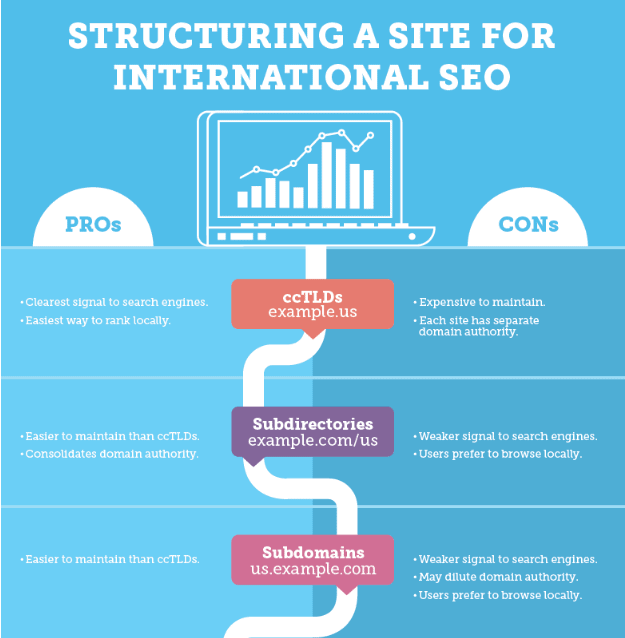 A third option is using subdomains for SEO. Search engines often treat subdomains like their own entities, crawling and indexing content separately. Subdomains can work for your URL structure as long as they don’t get too crowded with lots of text in the slug.
A third option is using subdomains for SEO. Search engines often treat subdomains like their own entities, crawling and indexing content separately. Subdomains can work for your URL structure as long as they don’t get too crowded with lots of text in the slug.
Identify the search engines you want to rank in
You may find that users in your target country or region use a different search engine to find information. Google still holds the largest market share of global search traffic:

In some areas, however, Google is not available. In China, Google’s market share has decreased dramatically since 2009 and Baidu is now the largest search engine:
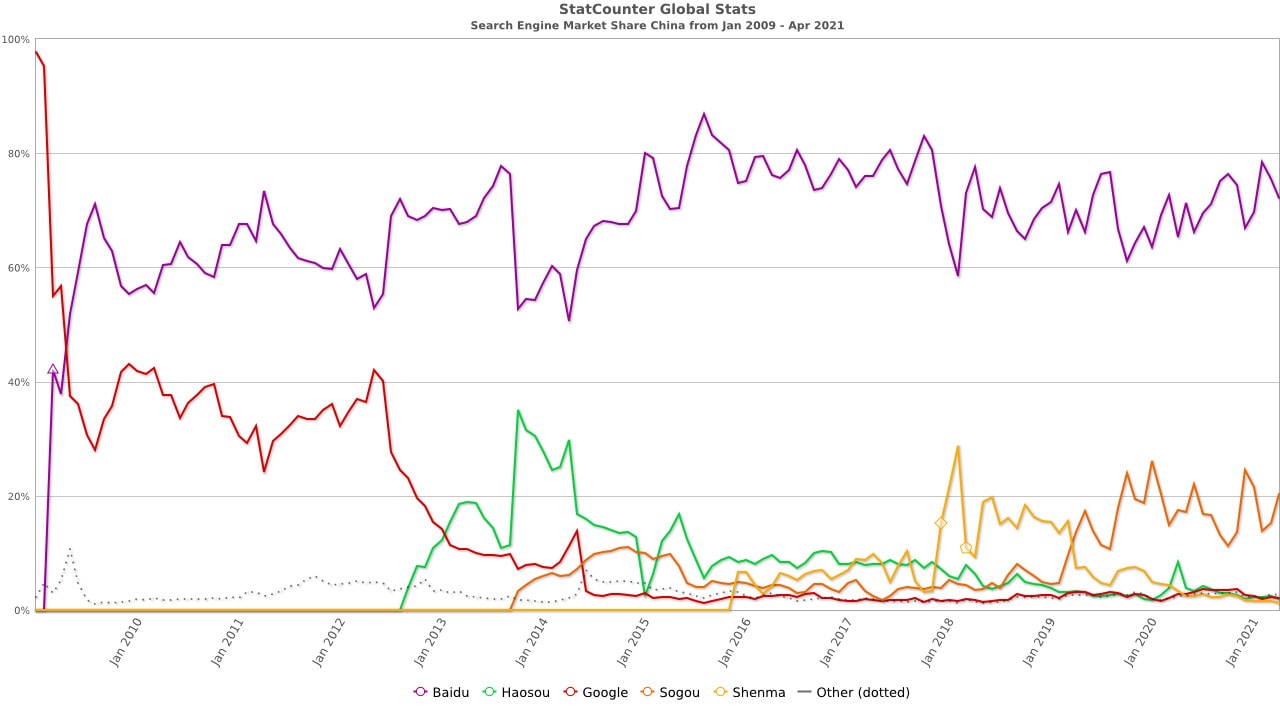 Meanwhile the search engine Naver has a large share in South Korea and Yandex has more than 50% share in Russia. Make sure that you identify the appropriate search engine to optimize for when you’ve chosen your target audience. This will impact the SEO techniques that you use.
Meanwhile the search engine Naver has a large share in South Korea and Yandex has more than 50% share in Russia. Make sure that you identify the appropriate search engine to optimize for when you’ve chosen your target audience. This will impact the SEO techniques that you use.
Create content relevant to each market
High-quality content is the heart of SEO. It can make or break your site traffic. Search engines view relevance as a reflection of a web page’s value.
As you develop your visual and written content, consider the audience. You could argue that there is significant overlap between users in Boston and New Jersey. But could you make that same argument for Boston and Ireland? Look holistically at your audience’s culture and shopping habits to adjust for the SERPs in that region.
Here are some ways to create valuable content:
- Conduct keyword research that cross-references your intended audience with top-performing web pages in your industry. It’s possible that you will have to adjust your keywords to accommodate colloquial language and dialect.
- Write comprehensively by discussing a topic from head to toe. If the user can get everything they need from your page, they will stay longer. This will improve your audience engagement metrics, like click-through rate (CTR), which Bing uses as a ranking factor.
- Understand user search intent and ensure that the content provides all of the necessary information. If users come to your site to make a purchase, you should focus on product descriptions and images rather than blog posts. If they’re coming for information, you should do the opposite.
- Use headers to organize your web page. This makes your content easier to read and understand. You can also use a navigation menu and table of contents to break down the information.
- Appeal to regional culture by developing a customer profile. Having a clear idea of who you’re selling to is a key component of making the right content.
High-quality content without SEO can outperform low-quality or spam content with SEO. Of course, you will need to do SEO to make your site visible on the first SERP. But, if you don’t have good information to begin with, you will likely never see the results you want.
Adhere to local laws and regulations
In 2020, the Australian government proposed regulations that would require Google to pay local news outlets for use of their media in SERPs. As a response, Google threatened to pull its search engine from the country altogether. Ultimately, the two sides reached an agreement, but this is still an important reminder for any global SEO strategy: the rules are not the same in every region.
If you want to reach users in Spain, for example, you’ll have to follow the EU’s GDPR regulations. This means that you’ll need to have the correct settings on your website to remain compliant in the region.

Depending on your intended audience, you may find that the normal content you would produce needs an overhaul. Make sure you thoroughly research your obligations within that region so that you don’t receive hefty fines or lawsuits as a result.
Build consistent NAP citations
NAP stands for “name, address, phone number,” and a NAP citation is a reference of your business on a directory or alternative guide (like Yelp). Since not everyone uses Google to find businesses, having a consistent presence across the web is important.
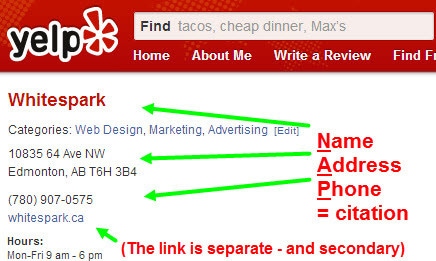
These citations ensure that no matter where someone is and what search engine they’re using, they can find your business online. This is especially helpful for brands that specialize in a certain niche within their industry. Visibility on the specific directories that people would go to look for your services or products can increase the number of visitors your website receives each month.
Determine a backlink strategy
Backlink building is a staple of general SEO success because it is one of the most important ranking factors. Search engines like to display web pages that come highly recommended. Even in the midst of internationalization, you need a strong backlink strategy in order to improve your search rankings.
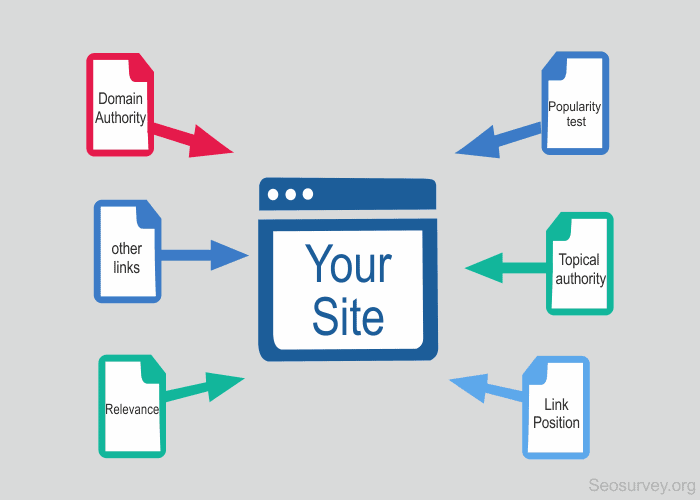
Do some competitor research before you develop your strategy. Take note of their online activity and content itself:
- What social media platforms do they use? EX. LinkedIn, Instagram, Twitter
- Do they publish on external sites like Medium or guest post on other sites?
- Where do they interact with users? EX. social media, comment sections
- How is their content unique? EX. infographics, charts, format
- What makes their content credible? EX. industry research, case studies, full-scope angle
Successful backlink strategies need high-quality content. You should consider hiring a multilingual content creator who understands the market better. Not only will you have the benefit of better copywriting, but you may also find better search terms to target with your new content.
Once you know that you have valuable web pages, it’s important to roll them out at a scalable pace. As you publish pages, ensure that you simultaneously build backlinks for them. This will maintain your site’s credibility and can improve your domain authority score.
[granwher-cta title=”Need help with global SEO?” text=”Get personalized global SEO strategies from a proven consultant.”]
Use the hreflang attribute
An important global technical SEO practice is adding an hreflang attribute to your website. This element tells the search engine what language your web page is in, helping it to display your content to the right users.
This would tell the search engine to display your content in the United States, rather than the United Kingdom. Say you’ve written in English but you’re based out of London and can’t ship overseas.
Hreflang tags tell Google which specific regions speak the content’s language. In this case, you would use the hreflang attribute to stipulate that your web page is directed towards British English rather than American English.
Target by language
In order to reach multiple countries at once, you can target entire languages. Across the globe, there are 20 countries that have Spanish as an official language:
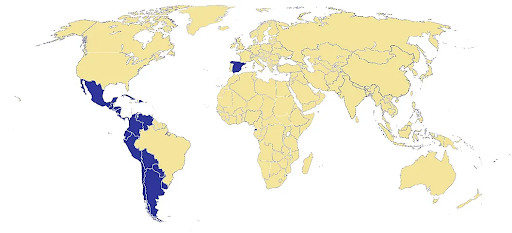
If you optimize for this language, you may find new customers on four continents. This is where hiring a professional translator or native speaker is the best option. A professional will be able to ensure that your web pages make sense to those users.
Then, you can use Google Analytics data to find out which countries like your content the most. Overall, this broader approach can help you hone in on specific areas and, eventually, their local languages.
Target by location
You can also target audiences by their geographic location. During your analytics research, you may come across certain regions that engage more with your content. Say you notice that central American countries spend a longer amount of time on your site.
Rather than targeting all Spanish-speaking countries, you can deep dive into the culture, behaviors, and values of central American users. Content localization will improve its relevancy and can ultimately boost your rankings.
Identify areas for expansion
To grow your traffic, you need to figure out places with the highest search volume in your industry. Investigate search patterns in your industry and look for:
- Industry buzzwords
- Competitors with lots of backlinks
- Top-ranking pages abroad
- Popular topics in different languages (via social media)
It may help to start generally and then slowly narrow down your focus. Rather than immediately jumping to your own analytics, start by identifying statistics like global internet usage and access.
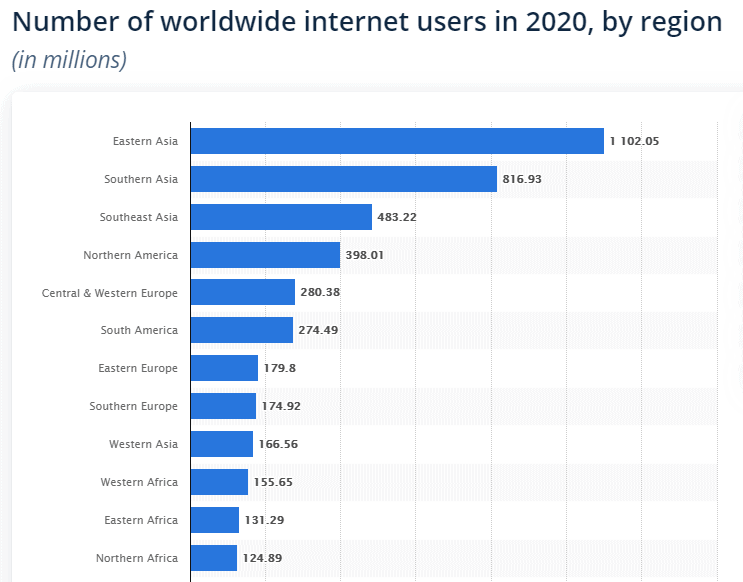
This quickly eliminates certain markets so that you can narrow down your strategy. You don’t want to go all-in on your number one source of organic traffic abroad only to find out that your second-best source actually has a much larger global audience.
Get a complimentary SEO audit
More and more people gain reliable access to search engines each year. Your digital marketing strategy needs global SEO practices to capture these growing audiences.
Make sure you do plenty of competitor and market research before settling on an approach. Once you begin to implement these techniques, you will want to make sure you can handle all the traffic that may come your way.
Want to find out how you’re doing with SEO? Get an instant SEO audit below. Or, schedule a free consultation to see how intent SEO can generate 700% more profitable traffic.
